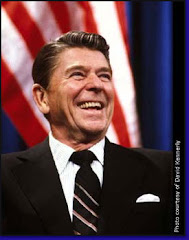by Steve Fair
In 1995 Oklahoma passed the Self Defense Act aka the Conceal & Carry law. Since that time over 107,000 Oklahomans have taken the course and received a license to carry a weapon. There have been only 30 revocations, 85 suspensions related to felony arrests, and about 15 suspensions per year for failure to conceal. Licensed C&C holders represent about 2.8% of the population of the Sooner state.
*****
Last week, State Representative Mark McCullough, (R-Sapulpa), convened an interim study to review Oklahoma’s gun laws. “We are conducting a serious, thoughtful examination of Oklahoma’s gun laws,” McCullough said. “Our goal is to develop responsible proposals for expanding the right to carry firearms in self-defense.”
During the study, members of the House Public Safety Committee heard testimony from Oklahoma City University law professor Michael O’Shea, a nationally recognized expert on the Second Amendment. O’Shea said Oklahoma’s Self Defense Act is unreasonably harsh in its concealment provision. The Oklahoma law states that the gun must be completely concealed from view and detection, meaning even accidental exposure of the weapon is a crime.
Tim Gillespie, an official with Oklahomans for the Second Amendment urged lawmakers to amend state law to allow gun owners to openly carry a weapon on their own private property, saying such restrictions are unreasonable.
During the study, legislators considered at a wide range of issues, including modifying the weapons permitting process, open carry, and possible constitutional issues that may need to be addressed in light of certain court rulings.
It’s legal to conceal and carry in 49 of the 50 states. Only Illinois does not allow a citizen to carry a gun. Seems a little ironic because Chicago has one of the highest gun related crime rates in America, yet it’s ‘illegal’ to carry a gun in Chicago. The old adage is right- ‘when you outlaw guns, only outlaws will have guns.’ Rocker Ted Nugent, an outspoken advocate for the Second Amendment, says, "If guns cause crime, all of mine are defective."
Concealed handgun laws have reduced violent crime in America for two reasons. First, it reduces the number of attempted crimes because criminals are uncertain which potential victims can defend themselves. Second, victims who have guns are in a much better position to defend themselves from criminals.
The upcoming Oklahoma legislature should consider two improvements to gun laws in Oklahoma:
First, Oklahoma should have Open Carry. While many believe open carry would frighten people so gun toters should be considerate and “cover up” for the fearful’s sake, that argument doesn’t take into account the right of the gun owner to defend themself. A second argument against open carry is it makes you a target and that criminals will come after you if they see your gun. In a Department of Justice poll of violent criminals 57% said they fear a law abiding citizen with a gun more than they fear the police. The final and most compelling argument for open carry is that criminals do not openly carry their firearms. While law abiding people must conceal their firearms, it is also the preferred method of carry for criminals. It is not the gun you can see that is to be feared…it is the one you don’t see coming.
The real purpose of passing open carry is to fix the ‘causal exposure’ problem that currently exists in Oklahoma’s law. This proposal failed to get past a Republican controlled House committee in the 2011 legislative session after being passed by both chambers and vetoed by the Governor in 2010.
Second, Oklahoma should have Campus Conceal. There are no significant differences between carrying a concealed handgun on a college campus and carrying a concealed handgun in an office building, shopping mall, restaurant, grocery store, bank, or movie theater. Currently only Utah allows C&C license holders to carry on campus at their public colleges/universities. Fifteen states allow the individual schools to make the call, but only a couple of schools allow it.
It seems some liberal educators are afraid students will pull their weapon after a tough test and plug them. According to concealcampus.org, since 2006 of the nine degree-offering public colleges in Utah not one single gun incident, including threats and suicide has occurred. Efforts to get this passed in Oklahoma have failed the past two legislative sessions after higher education administrators lobbied against it.
Legal age Oklahoma college students should be allowed to exercise their constitutional right to bear arms on campus. These ‘gun free’ zones don’t work- ask Chicago. Former Vice President Walter Mondale, a Democrat, said, “Gun bans don't disarm criminals, gun bans attract them.”
Oklahoma legislators should be protecting citizen’s rights to defend themselves. The original intent and purpose of the Second Amendment was to preserve and guarantee, not grant, the pre-existing right of individuals to keep and bear arms.






